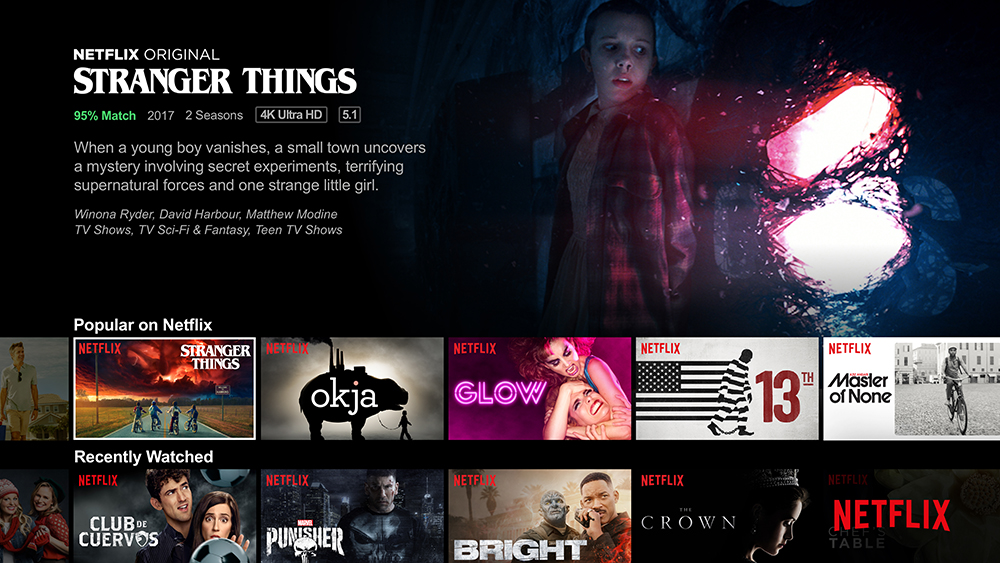Netflix update brings 'high-quality audio' to 5.1 and Atmos titles
It's upped bitrate capability and introduced adaptive audio streaming

Netflix has championed picture technologies such as 4K, HDR and Netflix Calibrated, but its audiovisual priorities haven't been one-sided. The service started streaming 5.1 surround sound in 2010, and three years ago it introduced Dolby Atmos content. Now it is improving its sound offering again with a feature it is simply calling ‘high-quality audio’.
Essentially, Netflix's new feature is two-fold: it has upped its audio encoder’s bitrate capability, and it has applied an adaptive algorithm to audio so that users get the best quality depending on their network conditions - as is already the case with video.
The bitrate threshold for a 5.1 mix has been increased from 192 kbps to up to 640 kbps, while Atmos content (available to subscribers of Netflix’s Premium tier) is now up to 768 kbps from 448 kbps. The video service expects these bitrates to evolve over time as the efficiency of its encoding methods improves.
Based on internal listening tests and Dolby test results, Netflix claims that while its audio isn’t lossless (i.e. a studio master), its compressed audio is indistinguishable from the original source; what it calls ‘perceptually transparent’.
Adaptive streaming for video, which allows picture quality to adjust dynamically during playback depending on a home network’s bandwidth capability, already exists within the Netflix framework. And now that algorithm has also been applied to audio.
Netflix's high-quality audio is compatible with a ‘wide variety of devices’ and available on ‘most titles’ with 5.1 surround sound or Dolby Atmos codecs. Netflix says the vast majority of its subscribers using 5.1- or Atmos-supporting devices should be able to enjoy it.
A Netflix blog post details how a review of Stranger Things 2 with its creator, the Duffer Brothers, in 2017 spurred the development. ‘At one point in the first episode, there was a car chase scene that didn’t sound as crisp as it did on the mixing stage. We immediately got our sound expert involved, spun up the engineering teams and were determined to make it right, no matter how much effort it was going to take,’ it states.
The latest hi-fi, home cinema and tech news, reviews, buying advice and deals, direct to your inbox.
MORE:
Dolby Atmos: What is it? How can you get it? What speakers do you need?

Becky is a hi-fi, AV and technology journalist, formerly the Managing Editor at What Hi-Fi? and Editor of Australian Hi-Fi and Audio Esoterica magazines. With over twelve years of journalism experience in the hi-fi industry, she has reviewed all manner of audio gear, from budget amplifiers to high-end speakers, and particularly specialises in headphones and head-fi devices.
In her spare time, Becky can often be found running, watching Liverpool FC and horror movies, and hunting for gluten-free cake.
